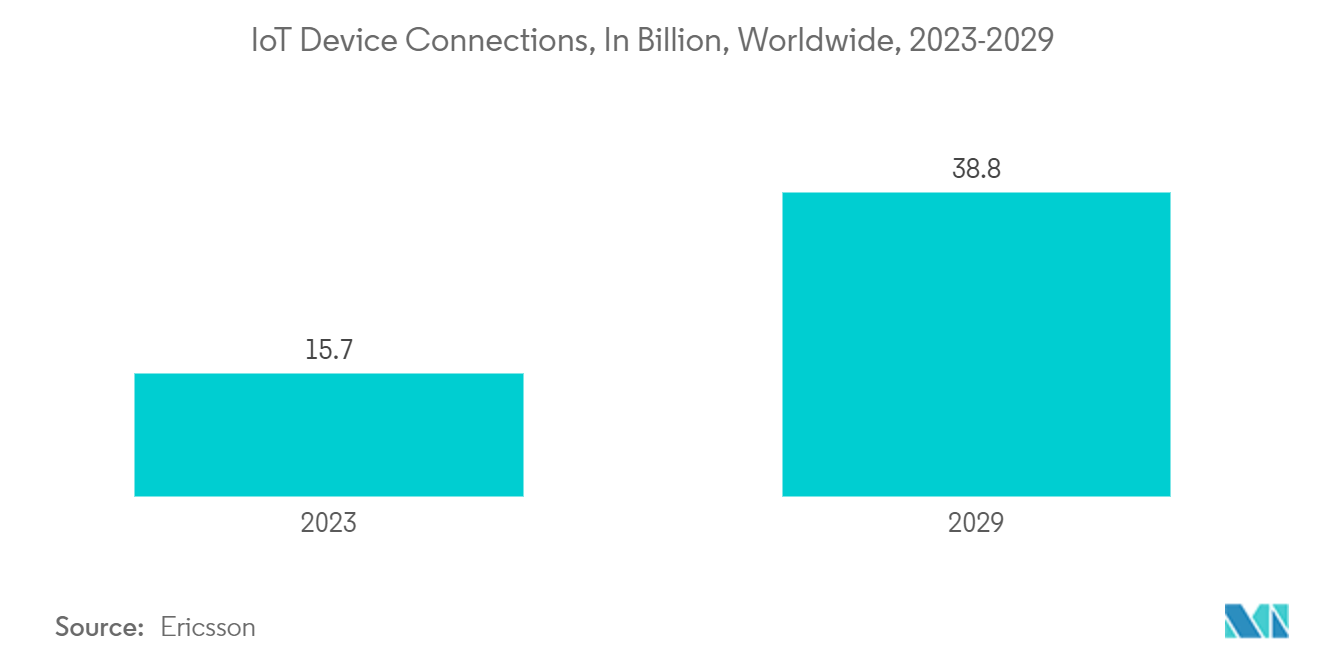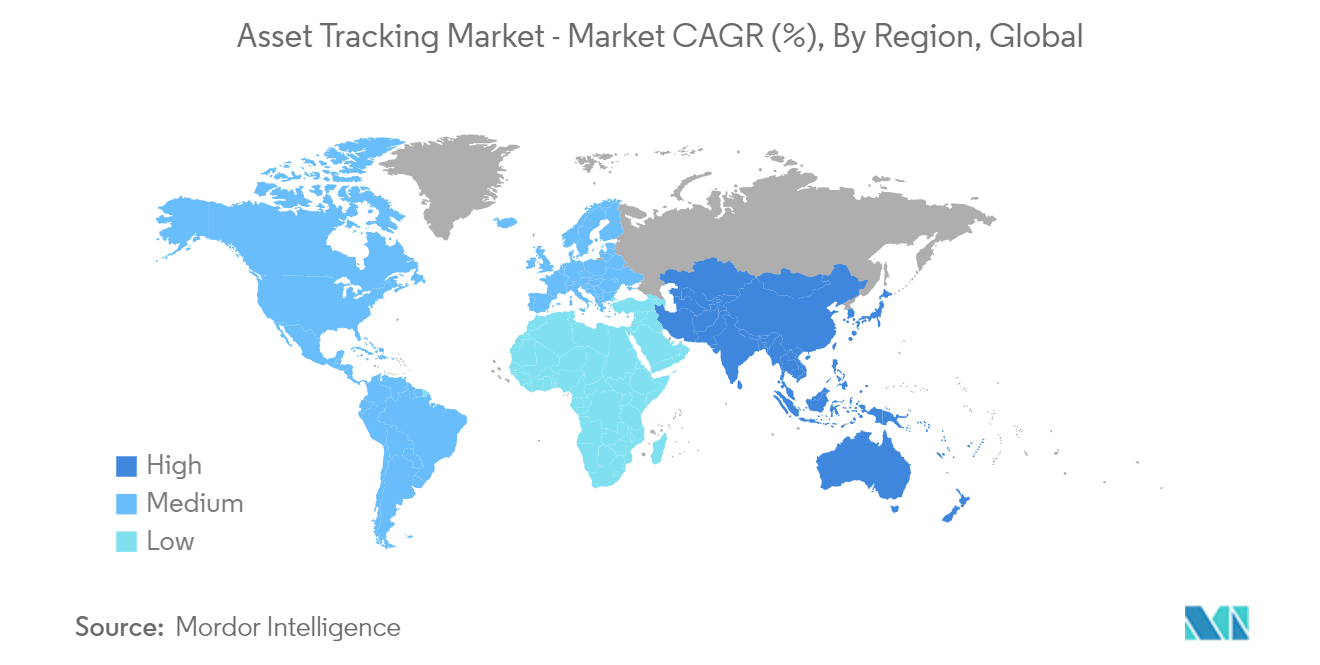Market Trends of Asset Tracking Industry
Manufacturing to be the Largest End-user Industry
- With the growing popularity of Industry 4.0 and smart factories, it has become necessary for manufacturing sectors to adopt advanced digital technologies to improve manufacturing processes. Industries widely adopt asset tracking to track and monitor asset location and status.
- Asset monitoring technologies are widely used in manufacturing facilities to monitor the movement and storage of raw materials, work-in-progress, and finished goods. Due to real-time tracking data, the supply chain's operations are streamlined, and stockouts are minimized.
- Advanced asset tracking technology, such as IoT and Bluetooth Low Energy (BLE), is rapidly gaining traction in the manufacturing industry. BLE tags come in many sizes, shapes, and capabilities, making it easy for manufacturers to tackle that first use case. Whether parts or equipment, asset tracking incorporates internet of things (IoT) advancements with thin tags that may be automatically tracked throughout the factory or yard. These advanced asset-tracking solutions with IoT are expected to enrich the asset-tracking solutions in the manufacturing sector, thus increasing the market's growth.
- The need to monitor multiple plant locations simultaneously to get real-time information about the process, operations, and inventory is expected to boost the growth of asset tracking in the manufacturing sector. Innovative asset-tracking solutions with IoT and Industrial IoT are anticipated to enrich the asset-tracking solutions. The growing IoT connectivity is leading to increasing demand for IoT asset-tracking devices.
- For instance, according to Telenor IoT, there are approximately 14 billion connected IoT devices in deployment, which exceeds the number of non-IoT connected devices, such as smartphones, tablets, PCs, and fixed-line telephones. This number is expected to grow to 30 billion in 2025. These devices play a crucial role in monitoring, locating, and managing assets remotely, which can enhance efficiency, improve security, and optimize utilization across various industries. The expanding IoT ecosystem is driving the adoption of such tracking devices to better manage and monitor assets in real-time.
- The growing shift toward smart factories, Industry 4.0, and digitization of the manufacturing sector is expected to provide a promising future for the market's growth during the forecast period.

North America Holds Largest Market Share
- North America is expected to account for a significant market share of the asset tracking market, owing to the high adoption rate of advanced technologies in countries across the United States and Canada.
- Canada and the United States have suffered similar supply chain logistics challenges, such as road and rail bottlenecks near borders and key ports. Significant weather disasters, worker shortages, security interruptions, and work stoppages due to material scarcity have underscored the necessity of redundancy and planning.
- The significant growth in the food and beverage segment in the United States and Canada and the adoption of advanced technologies contribute to the market's growth rate. The food and beverage segment is vital to the US economy. The industry accounts for around 5% of the nation's GDP and 10% of employment, including agriculture, manufacturing, retail, and foodservice. The US Committee for Economic Development reports that the food and beverage segment includes nearly 27,000 businesses and employs around 1.5 million people.
- Canada is also setting up its independent Supply Chain Task Force to confer with business leaders, employees, and industry experts to develop recommendations for both immediate and long-term solutions to logistical supply chain issues. Their shared determination to address supply chain logistics issues supports long-standing cooperation in transport logistics between Canada and the United States. This partnership ranges from joint management of the Great Lakes St. Lawrence Seaway System to implementing intelligent transportation systems, which allow commercial vehicles access to real-time border delay information.
- As the healthcare segment in the region is also witnessing incremental growth, the key players are innovating asset-tacking solutions. For instance, in February 2024, Geotab Inc. launched the Geotab GO Anywhere asset tracker. This hardware solution is designed to improve how companies manage and monitor their assets across various industries, such as transportation, shipping and supply chain, mining, construction, and government.
- These strategic collaborations and product launches aim to provide various industries, such as logistics, manufacturing, and food and beverages, with solutions that meet the current demand and technologies, boost the adoption rate, and consequently result in a growth rate in the region.


